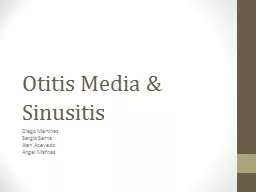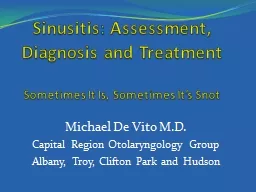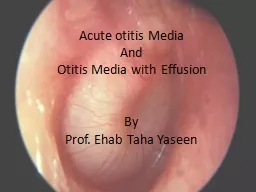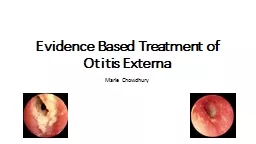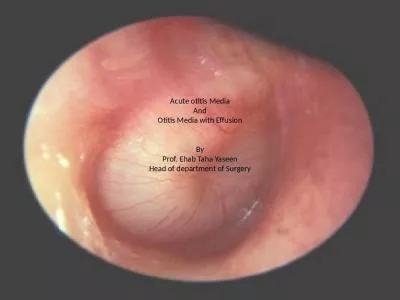PPT-Otitis Media & Sinusitis
Author : conchita-marotz | Published Date : 2020-04-10
Diego Martinez Sergio Serna Alan Acevedo Angel Mafnas Types of Otitis Media Acute otitis media AOM Is classified as the first symptoms to show an ear infection
Presentation Embed Code
Download Presentation
Download Presentation The PPT/PDF document " Otitis Media & Sinusitis" is the property of its rightful owner. Permission is granted to download and print the materials on this website for personal, non-commercial use only, and to display it on your personal computer provided you do not modify the materials and that you retain all copyright notices contained in the materials. By downloading content from our website, you accept the terms of this agreement.
Otitis Media & Sinusitis: Transcript
Download Rules Of Document
" Otitis Media & Sinusitis"The content belongs to its owner. You may download and print it for personal use, without modification, and keep all copyright notices. By downloading, you agree to these terms.
Related Documents

